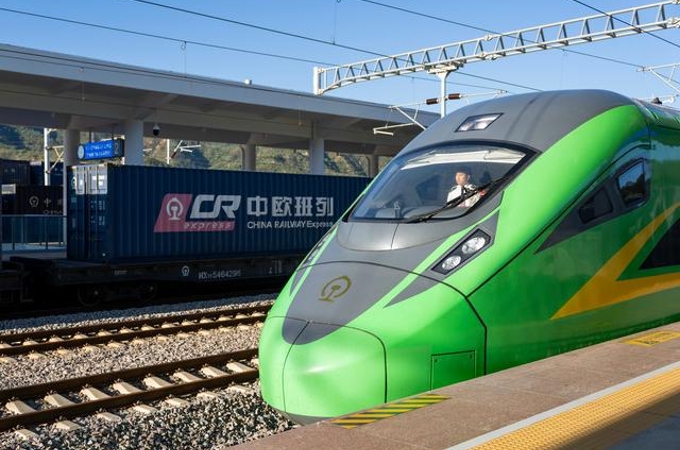
BEIJING, March 20 -- Not everybody has read the book - lost horizon (1933), but few would not recognize the name of Shangri-la, a heaven away from the turbulent mundane world.
Not surprisingly, since the book came out in 1933, many efforts were launched to seek out the mysterious land described by James Hilton. And over time, more and more evidence supports the belief that Shangri-la is hidden away somewhere in the southeast tip of the Qinghai-Tibet plateau.

Finally, Yunnan Province declared that Shangri-la was discovered in Deqen Tibetan Autonomous Prefecture located on the northwest tip of the province.
The prefecture covers a total area of roughly 23,000 sq km and consists of three counties, Shangri-la, previously known as Zhongdian, Deqin, and Weixi.
No one would argue that the great Nature is generous to Deqen: hundreds of snow-capped peaks, numerous rivers and lakes, boundless rich grassland with grazing cattle and horses under deep blue sky. In this movie-like setting, people of different ethnic groups such as Tibetan, Naxi, Lisu and Yi have been leading a peaceful and religious life for thousands of years.
Gedan Sumtse Ling Monastery

The largest ethnic group in Deqen is Tibetan. So you will find white pagodas, colorful prayer flags dotting the landscape as almost all Tibetan people are Buddhists.
Although every aspect of daily life bears the religious marks, monastery is always the best place to experience firsthand how essential Buddhism is to Tibetan people.
The Gedan Sumtse Ling Monastery, also known as Sumtseling si, is a typical Tibetan monastery of the Gelug Sect, or Yellow Hat Sect and the largest of its kind in Yunnan Province. Just five km north of Shangri-la County town, the monastery was first built in 1679 and has since been rebuilt many times.
Occupying an area of 33 hectares, the place is dubbed the little Potala as the architectural style is a faithful imitation of the Potala palace in Lhasa, Tibet.

A five-story Tibetan-style building serves as the main hall in the monastery. The lower level is supported by 108 giant pillars, an auspicious number in Buddhism.
It can hold 1600 people for meditation or scripture chanting. The main hall is open to Visitors most time of the day. Here you can make offerings to Buddha and listen to lamas chanting scriptures.
The monastery is one of the 13 grand monasteries in the Tibetan areas that were constructed following an edict by the fifth Dalai and Emperor Kangxi centuries ago.
The monastery houses many treasures. The most famous are the eight gold-plated sculptures of Sukyamuni, fashioned between the time of the Fifth and Seventh Dalai Lamas. In the early Qing Dynasty, the rulers of Lijiang, presented the monastery with dozens of bronze sculptures, the "Ganzur" scriptures hand-written in liquid gold, and many exquisite silver incense burners.

On the front walls, you can find artful murals depicting classical Buddhist stories and doctrines.
The 16 colorful pieces of Thangka, hanging high in the hall, are said to have been painted by renowned lamas with liquid gold given by the fifth Dalai Lama.
Don't worry. These lamas are not fighting. It is a practice of Tibetan Buddhist education called scripture debating. The particular practice first appeared in 11th century. Supervised by seniors, the monks divide into small groups and take turns asking questions and debating various topics. They are required to speak out loud, and clap hands to emphasize their points.

Tibetan Buddhists all believe that turning these praying wheels three times clockwise can bring them happiness, good fortune, and longevity. Guess the number of praying wheels here? 108!
Many grand religious activities are held at the monastery. It is said that on the fifth day of the first month in the Tibetan calendar, The ceremony of Welcoming Buddha will attract over 10,000 spectators.
There are three living Buddhas in the monastery. To believers, they are the messengers of Buddha and command paramount power. Many Tibetans travel long way to bring their kids here for the blessings of the living Buddha.
The monks here are refreshingly natural and alive. They found our camera a novelty. Not only posing for us, one of them even got some hands-on experience. Pretty amazing for a beginner, don't you think?
The main hall is surrounded by the living quarters of the lamas. Currently Sumtse Ling Monastery houses about 700 lamas. Most of them are from Deqen and neighboring areas.
Tibetan villages

Small villages, Tibetan farmers, green grassland covered with wild flowers with grazing yaks and horses, the pastoral landscape gives off a sense of tranquility that is almost surreal.
Yila grassland about six kilometers northwest of the county town is the largest and the most beautiful highland prairie in the county. During rainy season in summer, part of the grassland turns into a crystal clear lake.
Although now the flower season is over, I found the grassland attractive in a different way with wooden hay drying racks pointing gracefully toward the skies.
A small village in Nixi District, Shangri-la County is known for one thing - making the traditional black Pottery. And Sunnuoqilin's family has two of the best craftsmen in the village.

Sunnuoqilin is the father. He started to learn making pottery since the age of twelve from his grandfather. Sunnuoqilin is proud that the butter teapot was made over half a century ago by his dad and is still in use.
They are not the only family that makes pottery. About 70 out of the 100 families in the village are engaged in the business. Sunnuo's eldest son, luosangenzhu is picking up the family business now.
It's amazing to see that although every step is manual, each piece is meticulously made. The clay is taken from a mountain three kilometers away from the village.
Pottery making has a long history in Tibet that can be dated back 4,000-5,000 years. What they make here at Nixi are mostly household items such as pots, jars, stoves, basins and even soap dishes. Because of the superior quality, even people from Tibet come here to get Nixi pottery. With the tourism business heating up, Nixi pottery also makes great travel souvenir.







